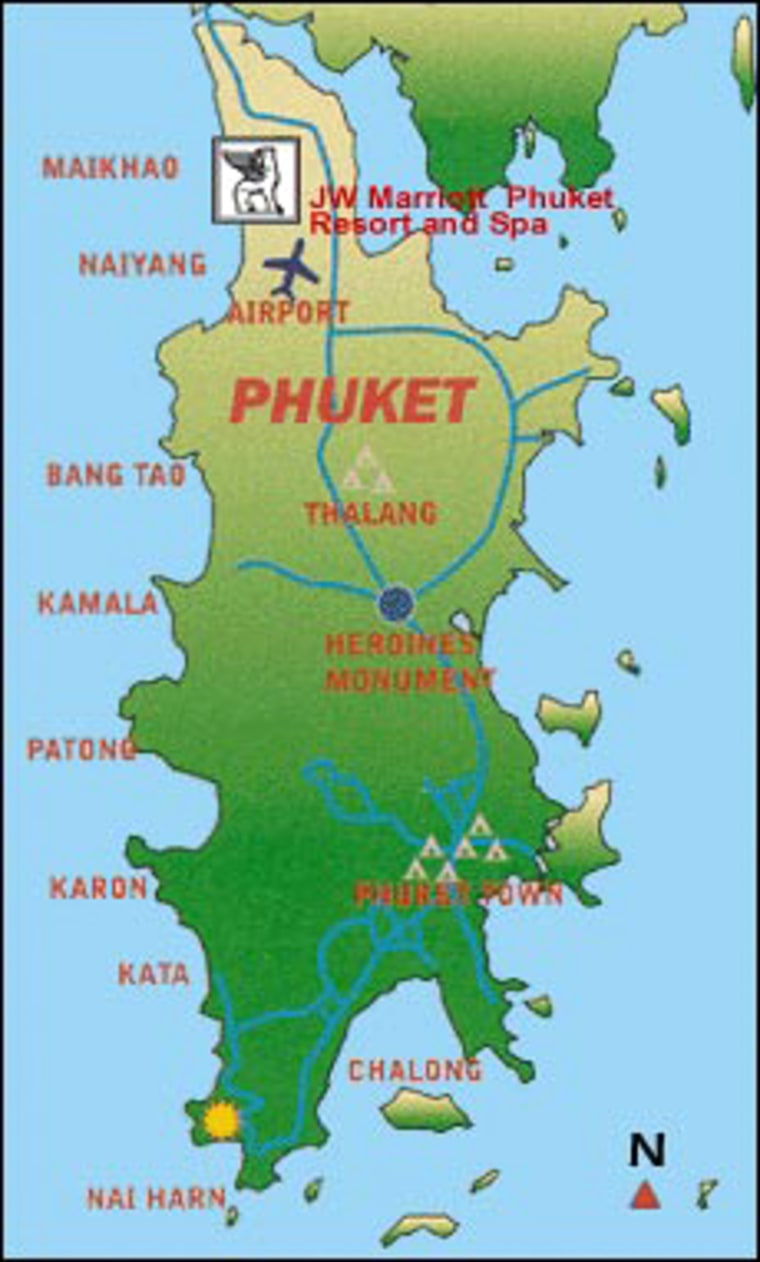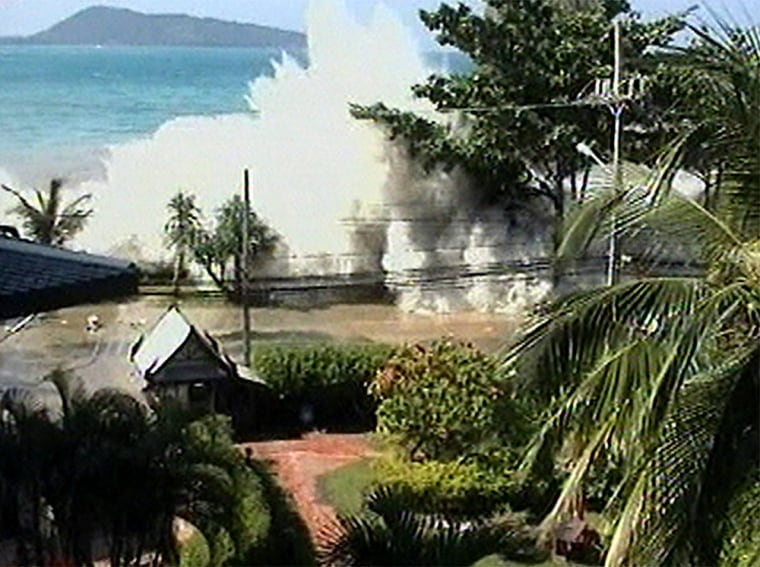I am doing fine here in Phuket and my wife, Taifoon, and I have no injuries from the tsunami. A warning call from a fellow J.W. Marriott staff member in Patong aided in our survival. With only two minutes to spare, quick beach and pool evacuations saved hundreds of lives. So far, no deaths have been reported and people at the resort have only suffered from minor injuries.
The beachfront resort itself withstood any major damages. Now, it's being used as a staging ground for rescue operations to nearby locations.
We are very lucky and thankful here.
That fateful day
I was at the resort the day the tsunami struck. It was an absolutely perfect day; The Andaman Sea was like shining like glass.
After arriving early to work that day, coworkers kept telling me they felt an earthquake about 8:30 a.m. But at 10:30 a.m., one of my colleagues, Ray, ran into my office and shouted that a giant wave just hit the resort. I ran outside to see what was going on. With more rollers heading into shore, I could already see the beachfront was in total disarray: Sand covered the resort, thousands of fish flapped out-of-water, furniture was all over, and trash-filled sea water filled the giant pools.
My immediate thought went to the massage staff who put their mats down by the sea. I took off shoes, and ran to the beach. Beach boys, covered with water were screaming at me to leave. I could see no one floating in the sea.
I yelled to them it was a tsunami, and knew that the successive waves would be smaller. I jumped up on large granite rock to prepare for the next big hit. After checking the sea for about 5-10 minutes and finding no bodies, I made my way back to dry land.
I went home immediately afterwards. An hour later, I arrived at our newly built-home to find no real damage. We then evacuated from our neighborhood to higher ground.
We waited it out on a small mountain with food and water. Rescue crews were evacuating the airport, so our area was surrounded by lots of tourist with their bags in tow. Trucks from showed up and passed out bottled water.
Some beaches were damaged, others were not
The first wave reportedly reached 12-15 feet high (very small by Patong and Phang Nga standards, which usually measures around 30 feet). The damage strangely skipped alternating beaches. My guess is it depends on the lay of ocean floor as it comes to the beach. The flat beaches causes the wave to lift extremely high, since such a large mass of water is involved. Our beach at Maikhao Marriott beach drops off and becomes deep quickly.
Khao Lak just north of our island over the Sarasin Bridge, where thousands died, is a very flat beach where you can walk into the water for hundreds of yards and it's still only to your knees (I have been there and done it). Patong (the badly damaged beach that has been in the news) was a beautiful bay. It is similarly flat as Khao Lak.
About three hours of listening to Thai radio after the first waves hit, Taifoon and I decided to venture back to the beach called Nai Yang, about two minutes from our house.

We rode our motorbikes since I suspected bad traffic and wanted quick exit if more waves followed. The beach at Nai Yang was destroyed, and trees and sidewalks were uprooted. Large granite boulders weighing tons were rolled about. Buildings were wrecked, and it looked like a war zone. Motorcyles were lodged in trees, cars were bent in half, and the roads were totaled.
There was only a small loss of life there though, with about 10-20 deaths, but a lot of bleeding injuries. Everything was fairly stable by this time, and we decided to go back to Maikho and see if all was well there.
It is amazing to see what has happened to the shore. Going from the north end of the island at Maikhao, which is where the JW Marriott is, there isn't much damage.
Down a little south to Nai Yang, it was quite devastated.
A little further to Naithon, everything fine.
Next to Bang Tao, it was total devastation. Sidewalks gone, asphalt torn away, palm trees uprooted laying about, and all buildings just smashed. Stuff was littered everywhere, people were dazed and in total chaos.
Rebuilding begins
It's been a week, and crews from all over the world are here to help: Hundreds of supply trucks, both military are private, pack the highways. Helicopters and planes keep coming in. The Thai government is very organized and everything is proceeding efficiently; locals are all volunteering spare time to help.
I have never seen anything like this before. It's very depressing to see trucks full of coffins drive by, but there is lots to do.
The spirit of the Thai to rebuild is amazing. They do not linger on grief, but get to work quickly. Everywhere are bandaged people, but most are still smiling here in the Land of Smiles.
My request to all of you is to see if you can give blood, and also money. There are thousands of people here that a week ago had homes, cars, money and jobs, and now have nothing.
Even the shirt on their back may be a donation.
Sawadee Khrap.
